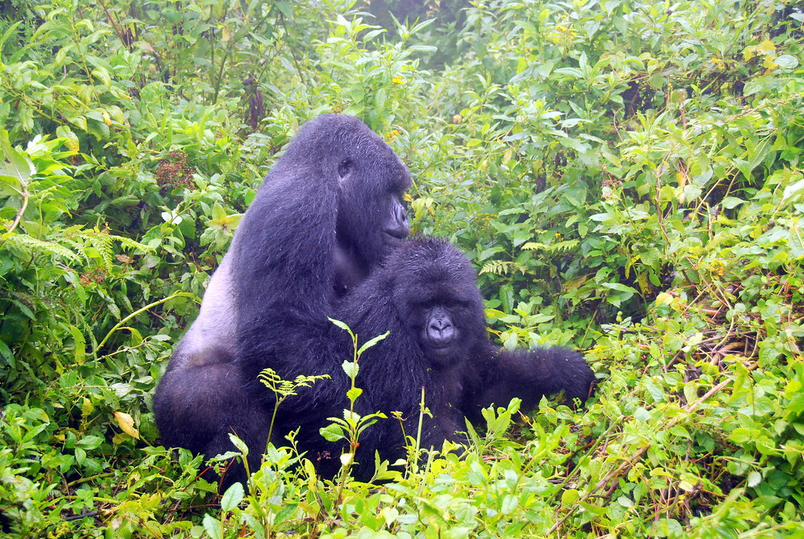
Do Mountain Gorillas Sweat?
Do Mountain Gorillas Sweat?
When you talk of sweat, many of us think of it as something messy, stinky, and typically disgusting but it is also a crucial part of an animal’s life. First, it is a cooling mechanism that helps in keeping internal body temperature at a reasonable level. Imagine life without sweating! Animals would possibly overheat and maybe die. However, did you know that mountain gorillas also sweat? Interestingly, mountain gorillas’ sweat glands closely resemble that of humans and they also have a similar distribution on their bodies.
The close human relative, mountain gorillas have the unique ability of sweating during warm weather as a way of remaining cool and comfortable. However, thermoregulation among these Great Areas is possible because of the sweat glands. Like other Great Apes-humans and chimpanzees, the mountain gorillas have a specialized tissue known as “axillary” or axilla organ found in their Armpits, which is exceptionally pronounced in the males. Generally, it is made up of 4-6 layers of glands that produce sweat as well as other smells.
Interestingly, the axillary gland plays a significant role in facilitating communication within the whole gorilla family/or group because it offers the alarm signal to other family members in case of nearby potential threats. When the enemy approaches the gorilla group, dominant silverbacks secrete a strong smell that spreads far and wide to alarm other members who will respond by running to safety.
Additionally, it is also an important sign of being available for reproduction, whereby female mountain gorillas that are ready for copulation also emit a typical smell, to which the silverback (primarily the dominant one) will react.
There are also apocrine and eccrine (the sweat) glands that usually lubricate mountain gorilla palms of their hands as well as soles of their feet.
Besides mountain gorillas (or generally gorillas), other animals that sweat include zebras, chimpanzees, the Old World monkeys (such as De Brazza’s monkeys, Olive baboons, Patas monkeys, vervet monkeys, Dryas monkeys, blue monkeys, Grey-cheeked mangabeys, Sykes’s monkeys, L’Hoests monkeys, golden monkeys, silver monkeys, Dent’s Mona monkeys and Hamlyn’s monkeys), Hippos and even dogs.
Other interesting facts about mountain gorillas
Despite their massive body size and how they have been portrayed, mountain gorillas are one of the gentlest and most peaceful creatures on Earth. However, no matter how gentle and soft they are, they can also get angry when provoked.
Mountain gorillas are social beings that live in tightly-knit families or groups of 5-30 members. The head is usually a dominant silverback who watches over other members that including subordinate silverbacks, adult females, sub-adult females, blackbacks, juveniles and infants.
 The gestation period of mountain gorillas is like that of humans (at 8.5 months) and after, a single baby is born.
The gestation period of mountain gorillas is like that of humans (at 8.5 months) and after, a single baby is born.
Mountain gorillas only live in the mountainous regions of East-Central Africa at altitudes ranging from 2500 to 4000 meters above sea level.
These Giant Apes are primarily herbivores that feed on leaves, stem, shoots, roots and sometimes fruits, not meat.
Where to see the mountain gorillas in the wild
Mountain gorillas (which are only found in the wild), can only be seen within Bwindi Impenetrable and Mgahinga Gorilla National Parks in Uganda, Virunga National Park of the Democratic Republic of Congo and Volcanoes National Park in Rwanda. For all these places, a total of 1063 individuals are sheltered.
Best time to trek the mountain gorillas
Generally, the months of June to September and December to February are the best times of the year for trekking the mountain gorillas. Drier trails and less precipitation are more comfortable for hiking through the jungles in search of these Giant Apes. However if you are worried about crowds, then you can book your gorilla safari for the wet season-March to May and October to November when most travellers are avoiding precipitation but be prepared for muddy and slippery trails.
